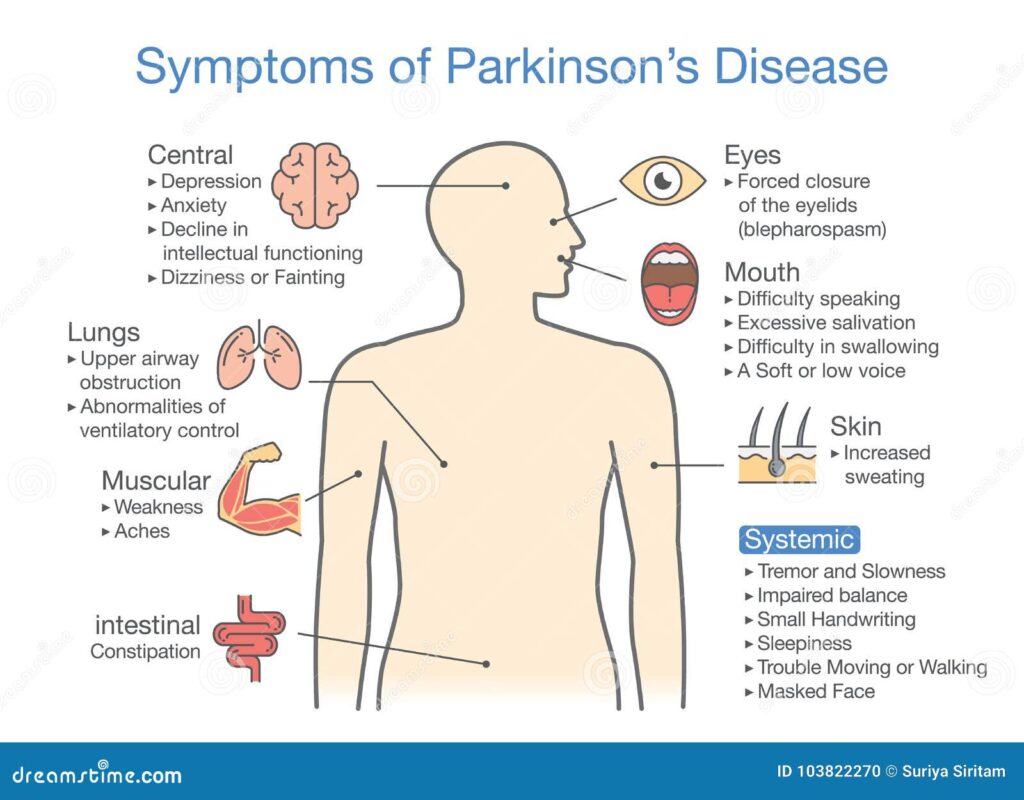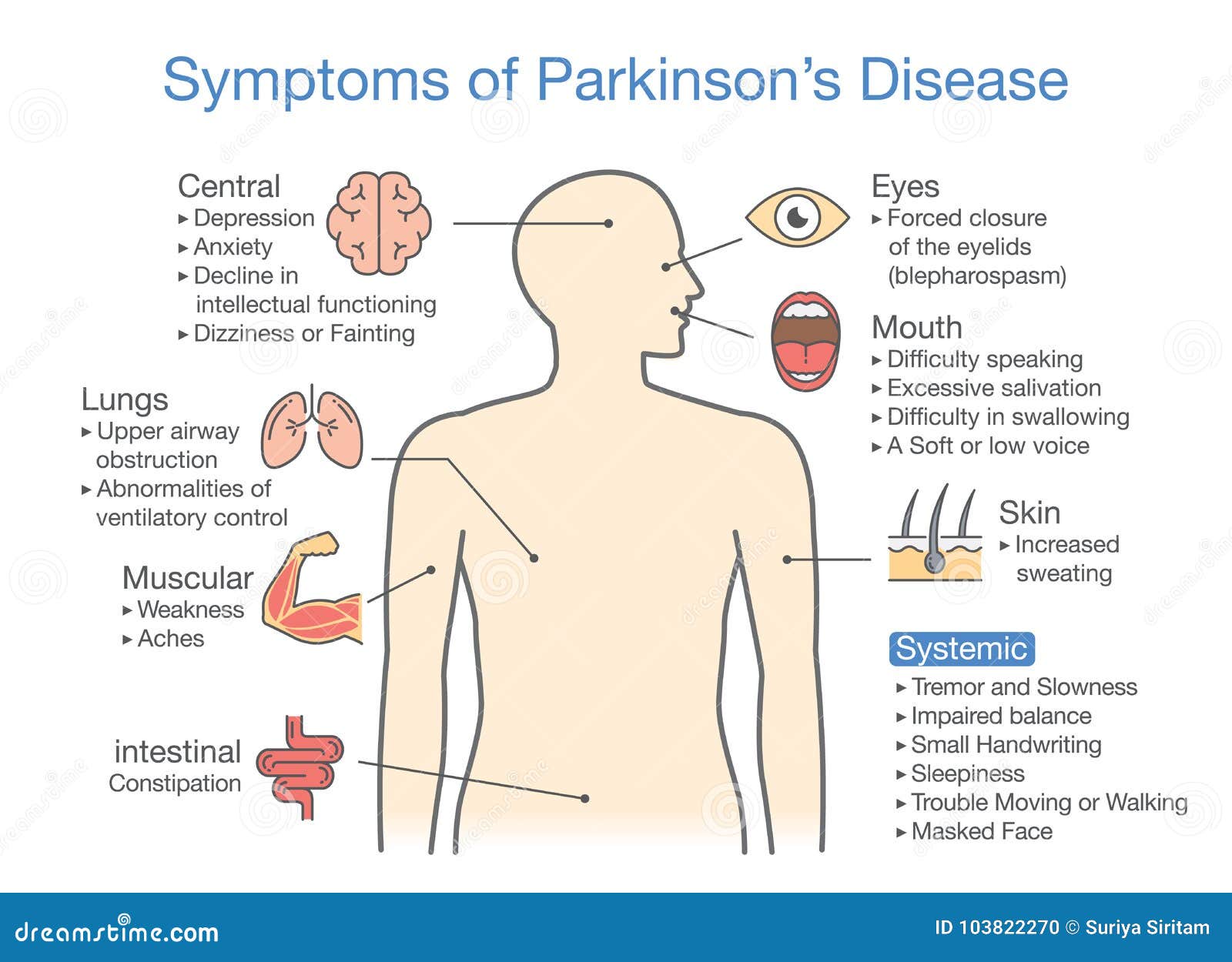
What is Parkinson’s Disease? Understanding the Symptoms, Causes, and Treatments
Parkinson’s disease is a progressive neurodegenerative disorder that primarily affects movement. It develops gradually, often starting with a barely noticeable tremor in one hand. While a tremor is a common sign, Parkinson’s can also cause stiffness, slowness of movement (bradykinesia), and problems with balance. Understanding what is Parkinson’s is crucial for early diagnosis and effective management. As the disease progresses, these symptoms can significantly impact daily life.
Understanding the Basics of Parkinson’s Disease
What is Parkinson’s in neurological terms? At its core, Parkinson’s disease involves the degeneration of nerve cells (neurons) in an area of the brain called the substantia nigra. These neurons produce dopamine, a neurotransmitter that helps control movement, coordination, and motivation. When these neurons die or become impaired, the amount of dopamine in the brain decreases, leading to the movement problems characteristic of Parkinson’s. The loss of dopamine affects not only motor skills but also can impact mood, sleep, and cognitive functions.
While the precise cause of Parkinson’s remains unknown, scientists believe that a combination of genetic and environmental factors plays a role. Research continues to explore potential triggers and pathways involved in the development of the disease.
Common Symptoms of Parkinson’s Disease
The symptoms of Parkinson’s disease vary from person to person, and the progression of the disease can also differ significantly. However, some common symptoms include:
- Tremor: Shaking, usually starting in a limb, often your hand or fingers. A characteristic tremor of Parkinson’s disease is a resting tremor, which means it occurs when the limb is at rest.
- Bradykinesia: Slowness of movement. This can make simple tasks difficult and time-consuming.
- Rigidity: Stiffness of the limbs and trunk, which can cause pain and restrict range of motion.
- Postural Instability: Impaired balance and coordination, which can lead to falls.
- Speech Changes: Soft speech, slurred speech, or hesitation before speaking.
- Writing Changes: Difficulty writing, and handwriting may appear small and cramped (micrographia).
Beyond these motor symptoms, Parkinson’s can also cause non-motor symptoms, such as:
- Loss of smell (anosmia)
- Sleep disturbances
- Constipation
- Depression
- Anxiety
- Cognitive changes
It is essential to note that not everyone with Parkinson’s experiences all of these symptoms, and the severity of symptoms can vary widely. Early diagnosis and treatment can help manage symptoms and improve quality of life. If you suspect you or someone you know has what is Parkinson’s, consult a healthcare professional.
What Causes Parkinson’s Disease?
The exact cause of Parkinson’s disease is still unknown, but researchers have identified several factors that may contribute to its development:
- Genetics: While most cases of Parkinson’s are not directly inherited, certain genetic mutations have been linked to an increased risk of developing the disease.
- Environmental Factors: Exposure to certain toxins, such as pesticides and herbicides, has been associated with a higher risk of Parkinson’s.
- Lewy Bodies: These abnormal clumps of protein, called alpha-synuclein, are found in the brains of people with Parkinson’s. While their exact role is not fully understood, they are thought to play a role in the degeneration of dopamine-producing neurons.
- Oxidative Stress: This is an imbalance between free radicals and antioxidants in the body. Oxidative stress can damage cells and contribute to the development of Parkinson’s.
It’s likely that a combination of these factors contributes to the development of Parkinson’s disease in most people. Ongoing research continues to explore the complex interplay of genetics, environment, and other factors in the pathogenesis of the disease.
Diagnosing Parkinson’s Disease
Diagnosing Parkinson’s disease can be challenging, as there is no single definitive test. A neurologist typically makes the diagnosis based on a combination of factors, including:
- Medical History: The neurologist will ask about your symptoms, medical history, and family history.
- Neurological Examination: This involves assessing your motor skills, balance, coordination, and reflexes.
- Symptom Evaluation: The presence of key symptoms like tremor, bradykinesia, rigidity, and postural instability is crucial for diagnosis.
- Response to Medication: The neurologist may prescribe a medication called levodopa, which is a precursor to dopamine. A positive response to levodopa can help confirm the diagnosis of Parkinson’s disease.
- Imaging Tests: In some cases, imaging tests such as MRI or DaTscan may be used to rule out other conditions or to assess dopamine transporter levels in the brain.
It is important to see a neurologist who specializes in movement disorders for an accurate diagnosis. Early diagnosis allows for timely treatment and management of symptoms.
Treatment Options for Parkinson’s Disease
While there is currently no cure for Parkinson’s disease, several treatments are available to help manage symptoms and improve quality of life. These treatments include:
- Medications: Several medications can help increase dopamine levels in the brain or mimic the effects of dopamine. These medications can help control motor symptoms such as tremor, bradykinesia, and rigidity. Levodopa is a commonly prescribed medication, often combined with carbidopa to prevent nausea. Other medications include dopamine agonists, MAO-B inhibitors, and COMT inhibitors.
- Deep Brain Stimulation (DBS): This surgical procedure involves implanting electrodes in specific areas of the brain. These electrodes send electrical impulses that can help control motor symptoms. DBS is typically considered for people with Parkinson’s who have significant motor fluctuations or who are not responding well to medications.
- Physical Therapy: Physical therapy can help improve strength, balance, coordination, and flexibility. It can also help people with Parkinson’s maintain their independence and prevent falls.
- Occupational Therapy: Occupational therapy can help people with Parkinson’s adapt to changes in their abilities and maintain their independence in daily activities.
- Speech Therapy: Speech therapy can help improve speech clarity, voice volume, and swallowing function.
- Lifestyle Modifications: Regular exercise, a healthy diet, and adequate sleep can also help manage symptoms and improve overall well-being.
The treatment plan for Parkinson’s disease is individualized based on the person’s specific symptoms, age, and overall health. Regular follow-up with a neurologist is essential to monitor the effectiveness of treatment and make adjustments as needed. [See also: Parkinson’s Disease and Exercise]
Living with Parkinson’s Disease
Living with Parkinson’s disease can be challenging, but with the right support and resources, people with Parkinson’s can maintain a good quality of life. Some tips for living well with Parkinson’s include:
- Stay Active: Regular exercise can help improve motor skills, mood, and overall well-being.
- Eat a Healthy Diet: A balanced diet rich in fruits, vegetables, and whole grains can help maintain energy levels and prevent constipation.
- Get Enough Sleep: Sleep disturbances are common in Parkinson’s disease. Establishing a regular sleep schedule and creating a relaxing bedtime routine can help improve sleep quality.
- Join a Support Group: Connecting with other people with Parkinson’s can provide emotional support and practical advice.
- Seek Professional Help: If you are experiencing depression, anxiety, or cognitive changes, seek help from a mental health professional.
- Plan for the Future: As Parkinson’s disease progresses, it is important to plan for the future. This may involve making financial arrangements, updating legal documents, and considering long-term care options.
Research and Future Directions for Parkinson’s Disease
Research into Parkinson’s disease is ongoing, with the goal of developing new and more effective treatments, and ultimately finding a cure. Some promising areas of research include:
- Gene Therapy: This involves introducing genes into the brain that can help increase dopamine production or protect neurons from damage.
- Stem Cell Therapy: This involves transplanting stem cells into the brain that can differentiate into dopamine-producing neurons.
- Neuroprotective Therapies: These therapies aim to protect neurons from damage and slow the progression of the disease.
- Biomarkers: Researchers are working to identify biomarkers that can help diagnose Parkinson’s disease earlier and track its progression.
Continued research offers hope for a better future for people with Parkinson’s disease. Understanding what is Parkinson’s is the first step towards finding effective treatments and ultimately a cure. [See also: Clinical Trials for Parkinson’s Disease]
Conclusion
Parkinson’s disease is a complex neurodegenerative disorder that affects movement and can impact various aspects of daily life. While there is currently no cure, understanding what is Parkinson’s, along with available treatments and lifestyle modifications, can help manage symptoms and improve quality of life. Ongoing research offers hope for new and more effective therapies in the future. If you or someone you know is experiencing symptoms of Parkinson’s disease, consult a healthcare professional for diagnosis and treatment.

